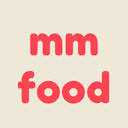The Language of Food Safety: How to Navigate Cross-Contamination Risks Anywhere
Learn how cross-contamination risks hide in language barriers and how mm food app translates menus and identifies hidden dangers for travelers with dietary restrictions.
MM Food Team

Dine Confidently Anywhere
Get the MM Food app for instant menu translation and allergy detection.
The Language of Food Safety: How to Navigate Cross-Contamination Risks Anywhere
Picture this: you're dining abroad and spot a dish that seems allergen-safe. But behind the scenes, a shared cutting board or fryer oil could turn that meal risky. Cross-contamination—the unseen transfer of allergens between foods—is a global challenge. For travelers, expats, or diners facing language barriers, this hidden danger intensifies. Understanding and communicating this concept is critical for anyone with allergies, celiac disease, or dietary restrictions.
What is Cross-Contamination?
Cross-contamination occurs when allergens or unsafe ingredients accidentally transfer to otherwise safe foods. Common scenarios include:
- Using the same knife for peanut sauce and vegetable stir-fry
- Frying gluten-free items in oil previously used for breaded foods
- Storing dairy products above vegan dishes Trace amounts can trigger severe reactions, making kitchen practices as important as ingredients themselves.
Why Language Barriers Amplify the Risk
Asking detailed food safety questions in another language is daunting. Key hurdles include:
- Nuanced phrasing: Explaining "shared cooking surfaces" or "dedicated fryers" requires precise terms.
- Menu ambiguities: Translated dishes often omit preparation methods.
- Staff hesitation: Busy kitchens might overlook risks when struggling to understand requests. This gap leaves diners vulnerable, turning meals into guessing games.
How mm food App Translates Safety
mm food tackles cross-contamination across languages:
- AI-Powered Translation: Instantly translates menus while preserving critical preparation notes (e.g., "fried in shared oil").
- Dietary Filtering: Set restrictions (e.g., "gluten-free," "nut allergy"), and the AI flags dishes at high risk for cross-contact based on ingredient interactions and cooking techniques.
- Proactive Alerts: Warns you if a “gluten-free pasta” shares boil water with regular pasta.
The app bridges understanding gaps—no fluency required.
Tips to Stay Safer Abroad
Supplement app insights with these practices:
- Learn Key Phrases: Master terms like "dedicated fryer" or "clean utensils" in your destination’s language.
- Ask Early: Contact restaurants ahead via mm food’s translated messaging feature.
- Choose Wisely: Opt for cuisines with naturally low cross-contact risk, like sushi (avoid sauces) or grilled meats.
With mm food, cross-contamination concerns needn’t limit your culinary adventures. Translate menus, decode risks, and dine confidently—anywhere in the world.
Tags

Dine Confidently Anywhere
Get the MM Food app for instant menu translation and allergy detection.